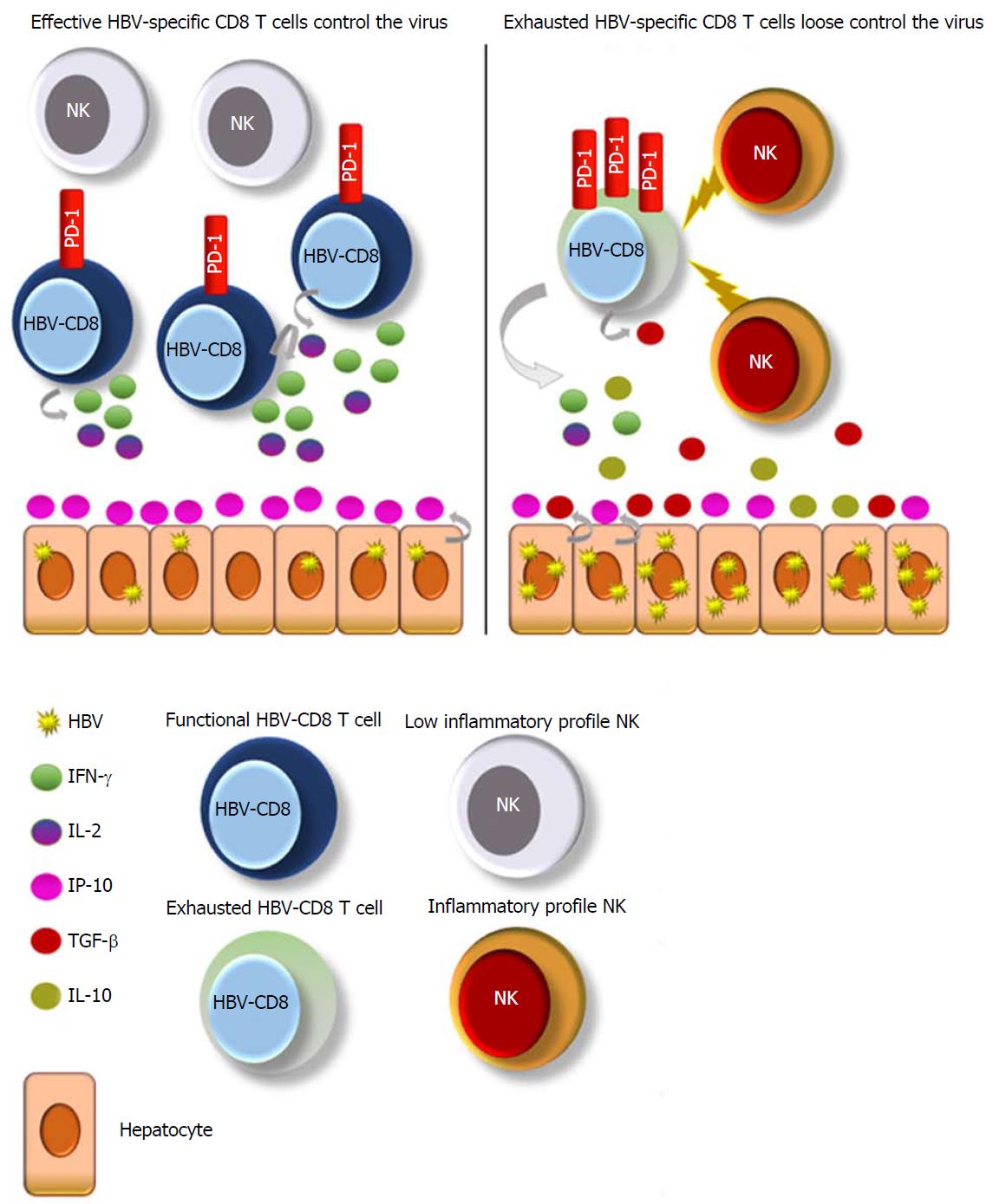Copyright
©The Author(s) 2018.
World J Gastroenterol. May 7, 2018; 24(17): 1825-1838
Published online May 7, 2018. doi: 10.3748/wjg.v24.i17.1825
Published online May 7, 2018. doi: 10.3748/wjg.v24.i17.1825
Figure 1 Potential immunological biomarkers for safe nucleos(t)ide analogue discontinuation.
A possible strategy to shorten NA therapy would be to check if HBV-specific CD8 T cells have reacquired their antiviral function after long-term therapy. Effective HBV-specific CD8 T cells control the virus: PD-1+ HBV-specific CD8 T cells against different epitopes, able to mount a robust response (IFN-γ, IL-2 production) after antigen encounter, may be a good predictive tool of response. Low inflammatory profile of NK cells may likewise reflect a good point to end therapy. High levels of IP-10 also could point to anti-viral control. Exhausted HBV-specific CD8 T cells lose control of the virus: High and sustained PD-1 expression on HBV-specific CD8 T cells reflects their dysfunctionality. Lower IFN-γ and IL-2 production, along with an immunosuppressive cytokine environment (IL-10, TGF-β), renders these cells to exhaustion. An inflammatory phenotype of NK cells may reflect NK cell-mediated T cell deletion through death receptors. Low levels of IP-10 could dissuade us to stop therapy. HBV: Hepatitis B virus; IR-10: CXCL10; NA: Nucleos(t)ide analogue; NK: Natural killer; PD-1: Programmed cell death protein 1.
- Citation: Moreno-Cubero E, Arco RTSD, Peña-Asensio J, Villalobos ES, Míquel J, Larrubia JR. Is it possible to stop nucleos(t)ide analogue treatment in chronic hepatitis B patients? World J Gastroenterol 2018; 24(17): 1825-1838
- URL: https://www.wjgnet.com/1007-9327/full/v24/i17/1825.htm
- DOI: https://dx.doi.org/10.3748/wjg.v24.i17.1825









